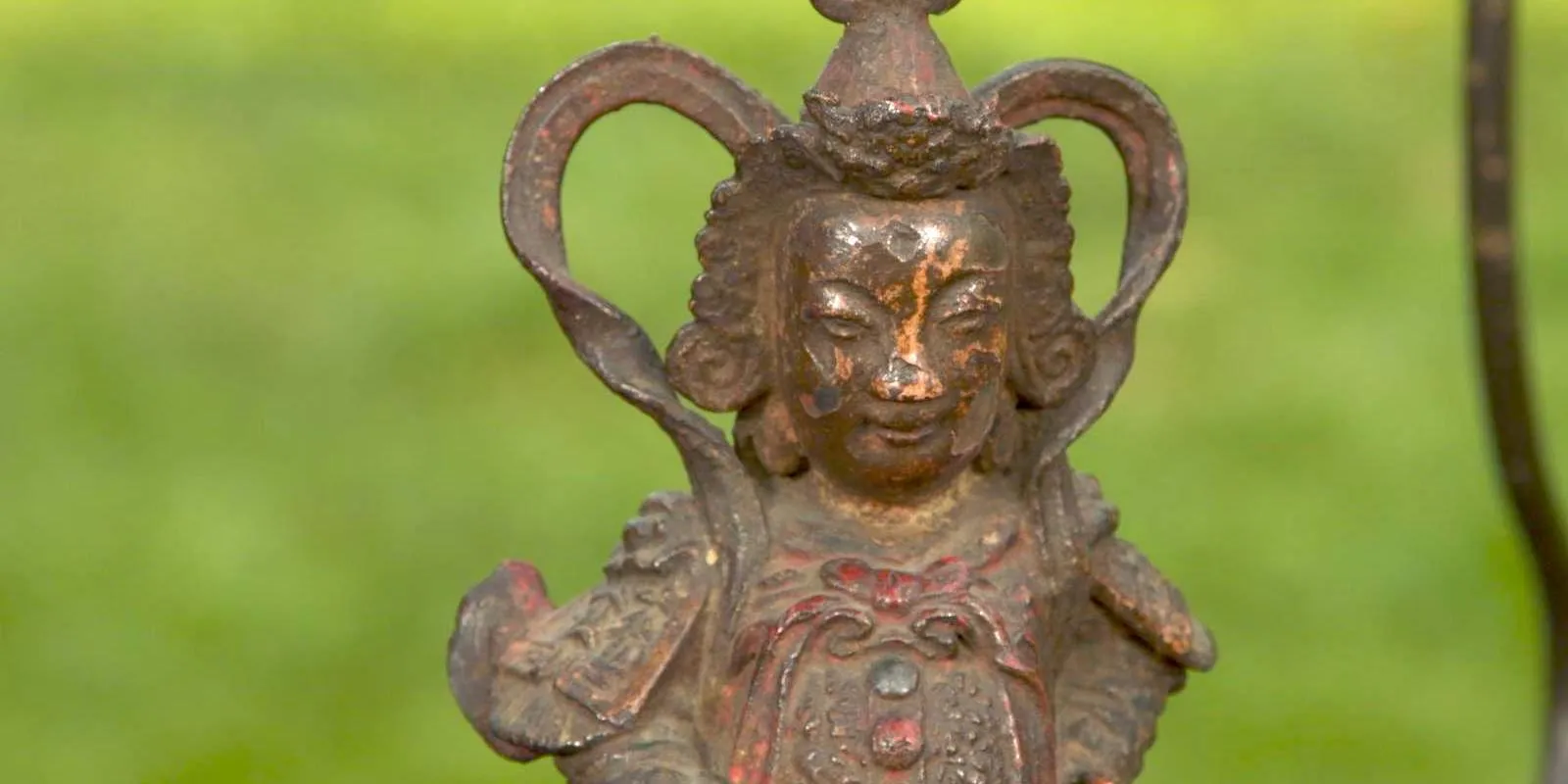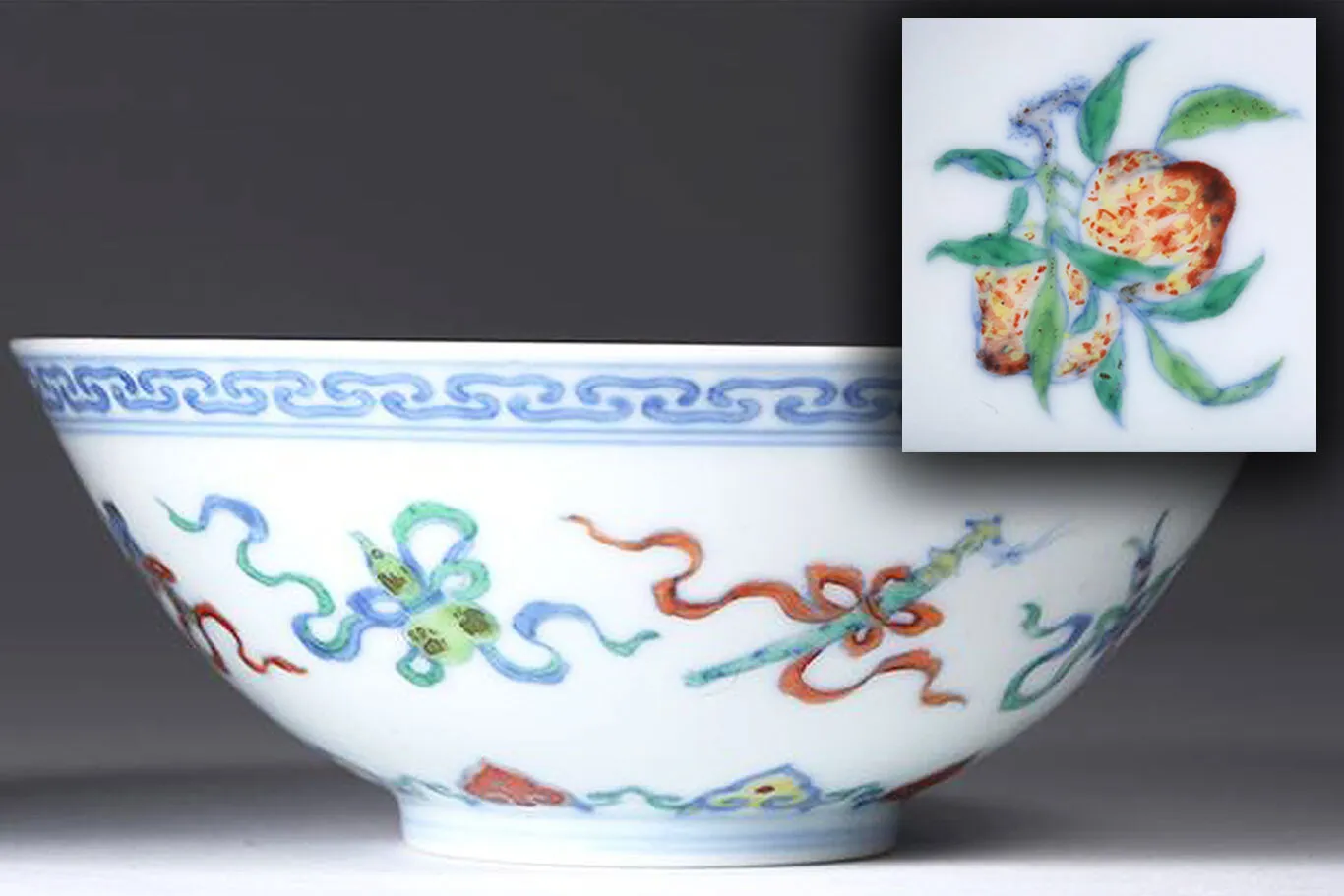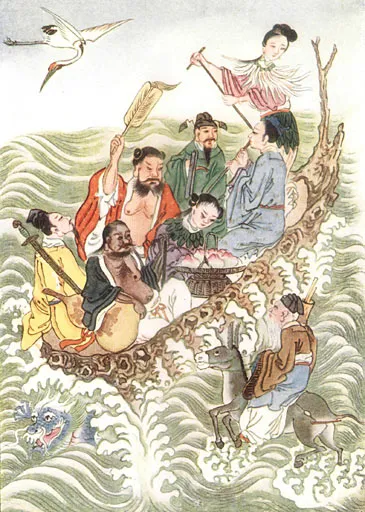Explainer: Who Are the Eight Chinese Immortals?
Asian Arts expert Lark E. Mason III explains the story behind the *BaXian*, eight important mythological figures that are so often seen on Chinese works of art.

During the Sands Point ROADSHOW event in September 2021, Asian Arts expert Lark E. Mason III appraised this 17th-century Ming Dynasty bronze, which he explained represents the figure Lü Dongbin, who as a poet and scholar, was considered to be the leader of the Eight Immortals. Mason estimated its current auction value at $5,000 to $8,000.
Feb 7, 2022
Some of the most legendary figures in traditional Chinese culture are the ones known as the Eight Immortals, or BaXian (八仙). These figures are a fascinating merger of historical, mythical, and religious, each with their own stories.
These stories tell of the virtues of their origin and accomplishments. They are said to live on Mount Penglai in the Bohai Sea. The majority of the Eight Immortals are based on figures from the Tang Dynasty (618-907) to Song Dynasty (960-1279), though some find their human counterparts in earlier entities.
Each lived a dramatically different life; they were generals, a father to an empress, scholars, politicians, hermits, artists, and sages. Though the BaXian are Daoist deities, they are also celebrated in secular Chinese culture.
Each of these deities has a symbol, items related to the legends and stories associated with them. Whether on a porcelain vase, a jade plaque, or a treasured scroll, the Eight Immortals are most often depicted together — though at times their unique symbols were used to represent them, rather than depictions of the figures themselves — as seen on this Yongzheng-period doucai bowl.

According to Mason, this Chinese painted porcelain doucai bowl, ca. 17th/18th century, depicts symbols of each of the Eight Immortals around the outside, while the center of the interior of the bowl (inset) is decorated with a representation of Xi Wangmu’s peaches, which the Ba ate when invited to dine with her. (Image courtesy: Lark Mason Associates)
During the Song Dynasty, these eight legendary figures were combined, to become the BaXian. Stories told for generations became books recorded, inspiring art that has been created for centuries and is still treasured today.
We are most likely to see the Eight Immortals depicted in one of their most popular adventures. The crossing of the Bohai Sea is the story of the Eight as they traveled to visit Xi Wangmu and take part in a banquet at her palace in celebration of the ripening of the peaches.
There are various versions of the story, but the constant is that the Immortals each showed their own individual prowess with their distinct tools and characteristics when crossing the ocean.

Illustration of the Eight Immortals crossing the sea, from "Myths and Legends of China," by E.T.C. Werner (1922). In the boat, clockwise starting from the stern: He Xian'gu, Han Xiang Zi, Lan Caihe, Li Tieguai, Lü Dongbin, Zhongli Quan, Cao Guojiu, and outside the boat, Zhang Guo Lao. (Image source: Wikimedia Commons)
From this adventure comes the Chinese proverb Ba xian guo hai, ge xian shen tong (八仙過海, 各顯神通) — "The Eight Immortals cross the sea, each revealing their divine powers."
Imagery of the venture is widely portrayed in art and is meant to evoke the idea that everyone, including the viewer, has their own contributions to give, no matter how unique their gift may be.
Having crossed the sea and reached their destination, the Eight Immortals are often depicted either with Xi Wangmu or simply by themselves in a garden setting, seeming to have just enjoyed the celestial peaches. These are the two most illustrated scenes of the BaXian.
The Eight Immortals have been and are likely to continue as one of the most often used and recognizable themes in traditional Chinese works of art. The influence of these legendary characters can be compared to the Greek Heroes in Western culture, mythological individuals who attained both secular and religious importance through their superhuman exploits and adventures.
Unlike the Greek Heroes, however, the depiction of the BaXian on Chinese art has continued even to this day and their modern cultural relevance demonstrates the power of their tales and the importance they have had for centuries throughout East Asia.


